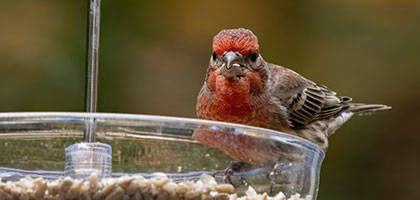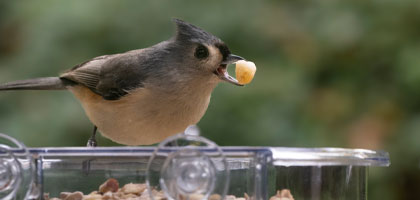Feeding cardinals can be a rewarding experience. These vibrant birds add color and song to any backyard.
But how do you attract them? What do they like to eat?
This guide will provide cardinal feeding tips for beginners. It will help you understand what cardinals prefer and how to create a welcoming environment for them.
We'll discuss the best bird feeders and food for cardinals. We'll also cover how to place your feeders and how to keep them safe from pests.
By the end of this guide, you'll be well-equipped to start your cardinal feeding journey. Let's dive in.
Understanding Cardinal Preferences
Cardinals are distinct for their bold red color and strong, conical bills. These birds have specific preferences when it comes to food and feeders. Understanding these preferences is the first step in successfully attracting cardinals to your backyard.
Knowing what types of food and feeders they favor is essential. Here are some preferences to keep in mind:
- Cardinals love sunflower seeds and nuts.
- They prefer large feeders with adequate perching space.
- Ground feeding spots are appealing to them as well.
By catering to their needs, you ensure a higher chance of frequent visits from these beautiful birds.
Choosing the Right Bird Feeder
Selecting the right bird feeder can make a huge difference in attracting cardinals. They need ample space to perch and feed comfortably. Large feeders with broad perching areas are perfect for these birds.
Platform feeders are an excellent option for cardinals. They allow easy access to food and accommodate multiple birds at once. Plus, they mimic ground feeding, which cardinals naturally prefer.
Window feeders provide a unique bird-watching experience. They let you observe cardinals up close without disturbing them. However, safety is key, so ensure they are positioned to minimize the risk of bird collisions.
When choosing a feeder for cardinals, consider these benefits:
- Large feeders provide adequate space and food storage.
- Platform feeders offer easy access and mimic natural feeding habits.
- Window feeders allow close viewing with proper placement.
With the right feeder, your yard can become a haven for cardinals.
Best Bird Food for Cardinals
Cardinals are fond of certain types of seeds that provide nutrition and energy. Sunflower seeds top the list, offering high-fat content that fuels their active lifestyles. Their hard shells are no match for the cardinal's strong beaks.
Safflower seeds are another favorite choice. These seeds are not only relished by cardinals but also help keep squirrels away, as they tend not to like them. Safflower seeds are often a staple for those looking to deter rodents.
Adding variety to their diet is beneficial. Along with their favored seeds, cardinals enjoy nibbling on crushed peanuts and cracked corn. These provide additional nutrients and keep the birds interested.
Here are some bird food favorites for cardinals:
- Sunflower seeds for essential fats and energy.
- Safflower seeds to attract cardinals and deter squirrels.
- Crushed peanuts and cracked corn for a balanced diet.
Offering a mix of these foods ensures your feeders are cardinal magnets.
The Importance of Feeder Placement
Where you place your bird feeder can significantly impact your success in attracting cardinals. These birds prefer feeders located in quiet areas, away from busy and noisy parts of your yard. Placing feeders near shrubs or trees can provide essential cover and a sense of safety for the birds.
Avoid setting feeders too close to structures or dense foliage where predators such as cats might hide. A clear line of sight allows cardinals to spot potential threats easily. Cardinals often prefer higher vantage points, so hanging the feeder at a moderate height can enhance their feeling of security.
Maintaining a balance of accessibility and safety ensures that your feathered friends feel welcome and protected. Consider experimenting with different locations to find what works best in your setting. This approach not only attracts cardinals but also minimizes the risk from predators.
Squirrel Proofing Your Bird Feeders
Squirrels and raccoons can be pesky intruders, often stealing food meant for your cardinals. To combat this, investing in a squirrel proof feeder can be beneficial. These feeders feature clever designs that prevent unwanted guests from accessing the bird seed.
Consider using feeders with cages or weight-sensitive mechanisms that close off access when a heavier animal tries to eat. To further deter these critters, you can:
- Place feeders on poles with baffles to block climbing squirrels.
- Hang feeders at least ten feet away from jumping points like trees or fences.
- Use spicy bird seed blends that birds eat but pests dislike.
By implementing these strategies, you ensure that your cardinals receive their share of the feast while keeping the pesky intruders at bay. This way, your cardinal feeding area remains a peaceful haven for the birds you wish to attract.
Additional Foods and Treats
Feeding cardinals isn't just about seeds; they enjoy a variety of foods. Diversifying their diet can keep these beautiful birds coming back. Fresh fruit offers a sweet treat, which many cardinals find irresistible.
In addition, mealworms make a great protein-rich snack, especially during breeding season when their nutritional needs rise. Suet products like pellets, cakes, or balls provide much-needed fat during colder months. To add variety, consider:
- Slices of apples or berries.
- Protein-packed mealworms.
- High-energy suet pellets and cakes.
Offering these treats not only satisfies cardinals' hunger but also attracts other birds like orioles and woodpeckers. By varying the food, you'll create a dynamic and exciting feeding environment for your backyard avian friends.
Creating a Cardinal-Friendly Habitat
A welcoming habitat is key to attracting cardinals. Providing water is essential, as cardinals need it for drinking and bathing. Birdbaths or small water features can serve as inviting water sources. Keep the water clean and fresh to ensure its appeal.
Native plants play a vital role in creating a cardinal-friendly environment. Shrubs and trees not only offer shelter but also provide natural food sources like berries. Planting native species helps replicate their natural habitat, making your yard a more enticing place for these birds. This setup encourages cardinals to visit and stay longer, providing more opportunities for observation and enjoyment.
Maintaining a Healthy Feeding Environment
Keeping feeders clean is crucial for bird health. Dirty feeders can harbor bacteria and mold, posing risks to cardinals and other birds. Regular cleaning helps prevent disease spread among your feathered visitors. Use warm water and mild soap, rinsing thoroughly after washing.
Monitoring the health of visiting birds is equally important. Watch for signs of illness, such as lethargy or unusual behavior. If you spot any issues, take steps to address them promptly. A clean and well-maintained feeding environment provides a safe space for birds to enjoy their meals and return regularly to your yard.
Engaging with the Birding Community
Connect with local birding groups to gain insights and support. These communities offer valuable tips and shared experiences to enhance your cardinal feeding journey. Engaging with fellow enthusiasts can deepen your appreciation for birds and provide helpful advice that can make your efforts more rewarding and successful.
Conclusion: Enjoying Your New Backyard Birds
Welcoming cardinals to your yard can bring immense joy and satisfaction. Their vibrant colors and sweet songs add natural beauty to any space. By following these cardinal feeding tips, you can enjoy a rewarding bird-watching experience and create a haven for your feathered friends.






